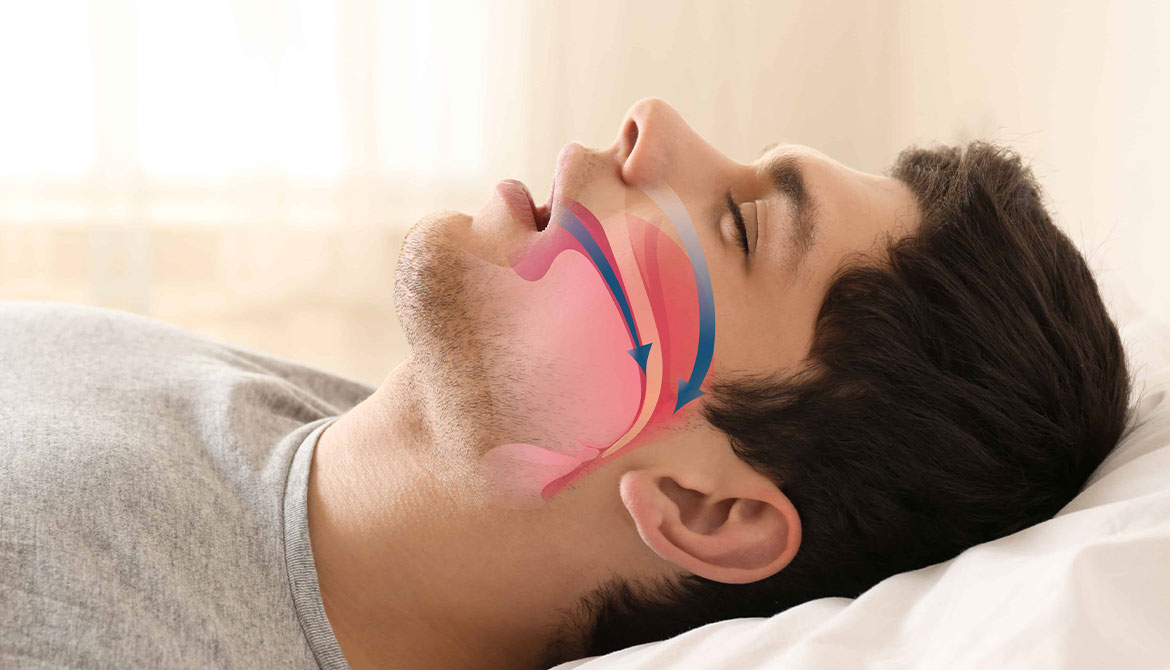Obstructive Sleep Apnea Syndrome: Symptoms, Causes, and Treatment Options
Repeated pauses or reductions in breathing during sleep can lead to a serious condition known as Obstructive Sleep Apnea Syndrome (OSA). This disorder negatively affects daily life by reducing sleep quality, and if left untreated, it can cause serious complications such as high blood pressure, heart disease, and cognitive impairments.
What Is Obstructive Sleep Apnea Syndrome?
Obstructive Sleep Apnea Syndrome is characterized by temporary pauses in breathing during sleep due to narrowing or complete blockage of the upper airway. This prevents sufficient oxygen from reaching the brain and causes frequent awakenings during sleep, leading to excessive daytime fatigue.
Breathing interruptions usually last more than 10 seconds and can occur hundreds of times per night. Patients often remain unaware of these pauses but wake up feeling tired and experience difficulty concentrating during the day.
Symptoms of Obstructive Sleep Apnea
Common symptoms of OSA include:
- Loud snoring (especially irregular and intermittent)
- Observed breathing pauses during sleep (usually noticed by a partner or family)
- Frequent awakenings and restless sleep
- Waking up with dry mouth or sore throat
- Excessive daytime fatigue and tendency to fall asleep
- Morning headaches
- Difficulty concentrating, forgetfulness, and attention deficit
- Irritability and mood changes
- Decreased libido
If you experience several of these symptoms, you should be evaluated for sleep apnea.
Causes of Obstructive Sleep Apnea
The primary cause of sleep apnea is the narrowing or collapse of the upper airway during sleep. Factors contributing to this include:
- Excess weight and obesity: Fat deposits around the neck can narrow the airway.
- Genetic predisposition: More common in individuals with a family history of sleep apnea.
- Enlarged tonsils and adenoids: Especially in children, can obstruct the airway.
- Large tongue: May fall backward during sleep and block the airway.
- Smoking and alcohol use: Can relax airway muscles, increasing the risk of collapse.
- Aging: Muscle tone decreases with age, making the airway more collapsible.
- Nasal congestion: Chronic nasal blockage increases the risk of sleep apnea.
How Is Sleep Apnea Diagnosed?
Diagnosis of sleep apnea is made through a sleep study called polysomnography. This overnight test in a sleep lab measures breathing patterns, oxygen levels, and brain activity to determine the presence and severity of apnea.
There are also simpler home sleep tests, but the most accurate diagnosis comes from a full polysomnography performed in a sleep laboratory.
Treatment Options for Obstructive Sleep Apnea
Treatment depends on the severity of the condition and underlying causes. Common treatment methods include:
Lifestyle Changes
For mild cases of sleep apnea, lifestyle changes can help manage the condition:
- Weight loss: Reducing excess weight can help open the airway.
- Avoiding sleeping on your back: Side sleeping can prevent airway collapse.
- Quitting smoking and alcohol: Helps maintain airway muscle tone.
- Regular exercise: Strengthens respiratory muscles and improves tone.
CPAP (Continuous Positive Airway Pressure) Device
For moderate to severe sleep apnea, CPAP is one of the most effective treatments. It delivers continuous pressurized air through a mask during sleep to keep the airway open.
Benefits of CPAP Therapy
- Improves sleep quality
- Reduces daytime fatigue
- Lowers the risk of heart disease and stroke
Some patients may initially find it difficult to adjust to CPAP, but regular use brings noticeable benefits quickly.
Oral Appliances
For mild to moderate cases, custom oral appliances prepared by dentists can help keep the airway open by repositioning the jaw and tongue.
Surgical Intervention
If anatomical obstructions such as enlarged tonsils, adenoids, or nasal blockages are present, surgery may be necessary. Common surgical procedures include:
- Tonsillectomy and adenoidectomy
- Uvulopalatopharyngoplasty (UPPP) – soft palate and uvula surgery
- Nasal surgeries to relieve congestion
Surgery is typically considered when other treatments fail.
What Happens If Sleep Apnea Is Left Untreated?
Untreated sleep apnea can lead to serious long-term health problems:
- High blood pressure and cardiovascular disease
- Increased risk of stroke
- Higher likelihood of developing type 2 diabetes
- Depression and anxiety disorders
- Daytime sleepiness leading to car accidents
Therefore, it is important not to ignore the symptoms of sleep apnea and to seek medical attention.
Conclusion
Obstructive Sleep Apnea Syndrome is a common but treatable health condition in modern life. Early diagnosis and proper treatment can significantly improve sleep quality and overall well-being. If you or someone you know experiences nighttime breathing pauses, loud snoring, daytime fatigue, or difficulty concentrating, it is advisable to consult a sleep specialist.
Healthy sleep is the key to a healthy life!


